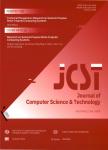CUDA-NP: Realizing Nested Thread-Level Parallelism in GPGPU Applications
CUDA-NP: Realizing Nested Thread-Level Parallelism in GPGPU Applications作者机构:Department of Computing Systems Architecture NEC Laboratories America Princeton NJ 08540 U.S.A. Department of Electrical and Computer Engineering North Carolina State University Raleigh NC 27606 U.S.A.
出 版 物:《Journal of Computer Science & Technology》 (计算机科学技术学报(英文版))
年 卷 期:2015年第30卷第1期
页 面:3-19页
核心收录:
学科分类:08[工学] 0835[工学-软件工程] 081202[工学-计算机软件与理论] 0812[工学-计算机科学与技术(可授工学、理学学位)]
主 题:GPGPU nested parallelism compiler local memory
摘 要:Parallel programs consist of series of code sections with different thread-level parallelism (TLP). As a result, it is rather common that a thread in a parallel program, such as a GPU kernel in CUDA programs, still contains both sequential code and parallel loops. In order to leverage such parallel loops, the latest NVIDIA Kepler architecture introduces dynamic parallelism, which allows a GPU thread to start another GPU kernel, thereby reducing the overhead of launching kernels from a CPU. However, with dynamic parallelism, a parent thread can only communicate with its child threads through global memory and the overhead of launching GPU kernels is non-trivial even within GPUs. In this paper, we first study a set of GPGPU benchmarks that contain parallel loops, and highlight that these benchmarks do not have a very high loop count or high degree of TLP. Consequently, the benefits of leveraging such parallel loops using dynamic parallelism are too limited to offset its overhead. We then present our proposed solution to exploit nested parallelism in CUDA, referred to as CUDA-NP. With CUDA-NP, we initially enable a high number of threads when a GPU program starts, and use control flow to activate different numbers of threads for different code sections. We implement our proposed CUDA-NP framework using a directive-based compiler approach. For a GPU kernel, an application developer only needs to add OpenMP-like pragmas for parallelizable code sections. Then, our CUDA-NP compiler automatically generates the optimized GPU kernels. It supports both the reduction and the scan primitives, explores different ways to distribute parallel loop iterations into threads, and efficiently manages on-chip resource. Our experiments show that for a set of GPGPU benchmarks, which have already been optimized and contain nested parallelism, our proposed CUDA-NP framework further improves the performance by up to 6.69 times and 2.01 times on average.



